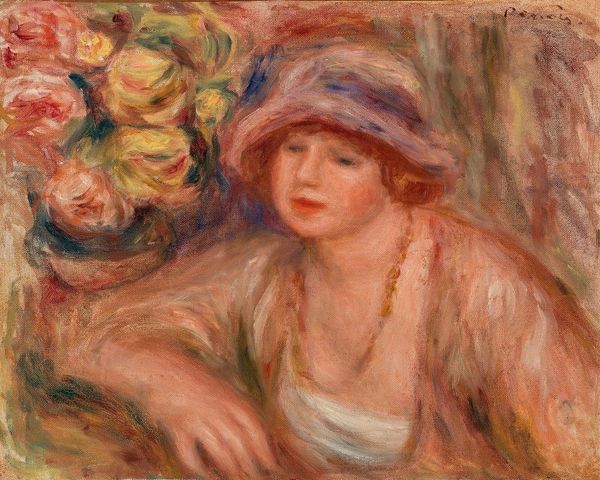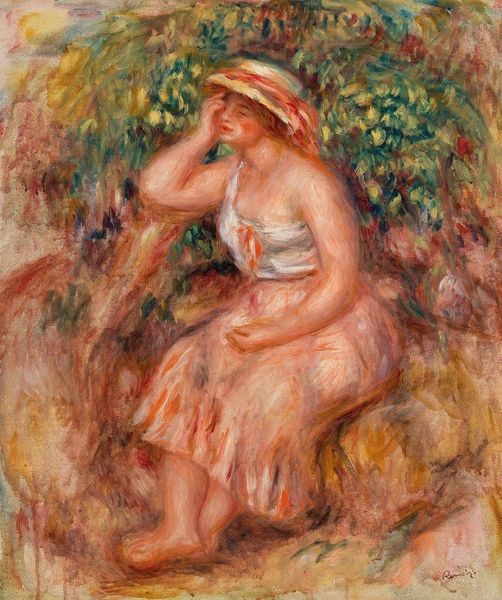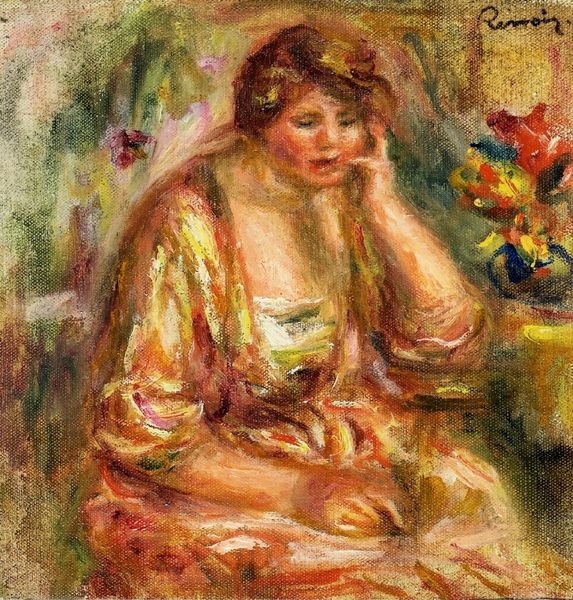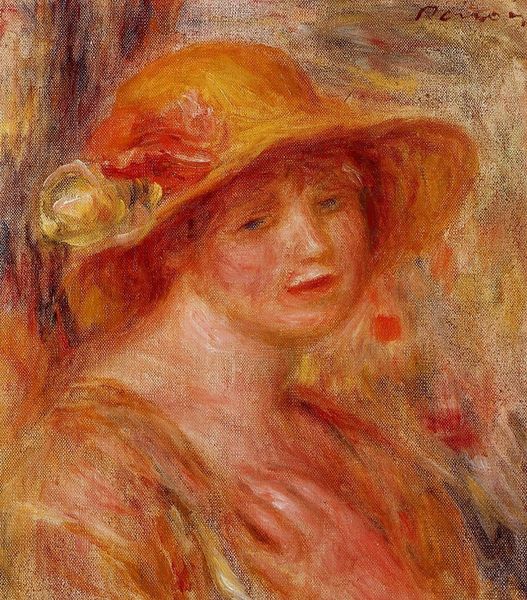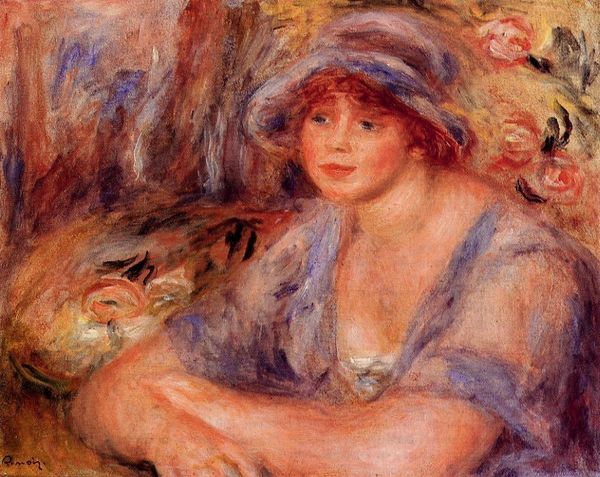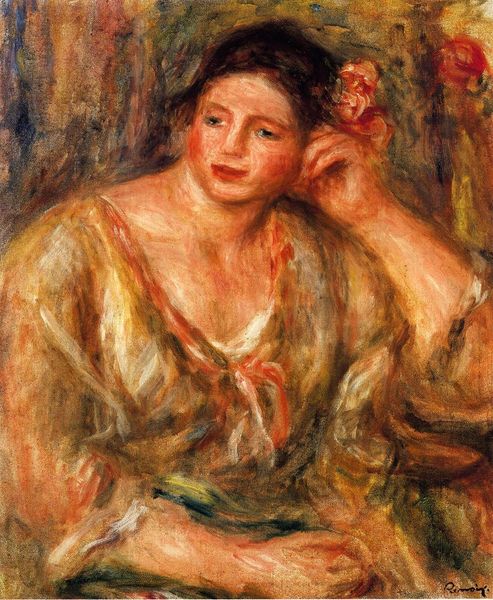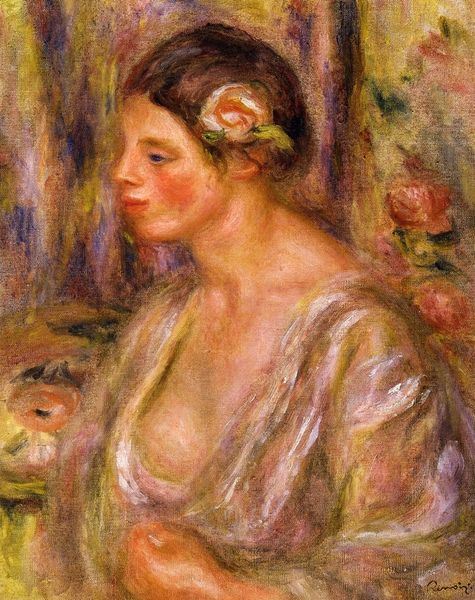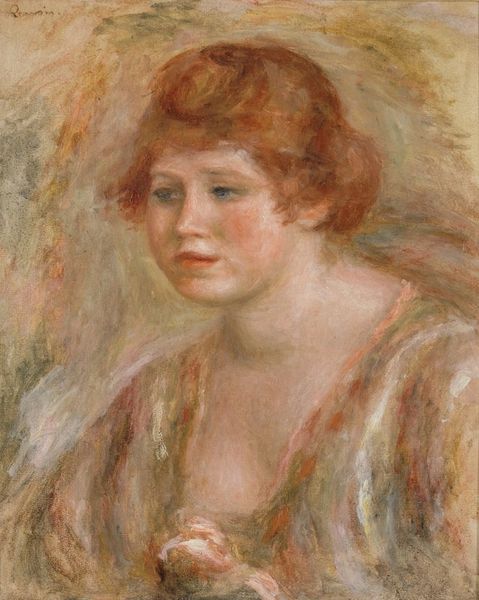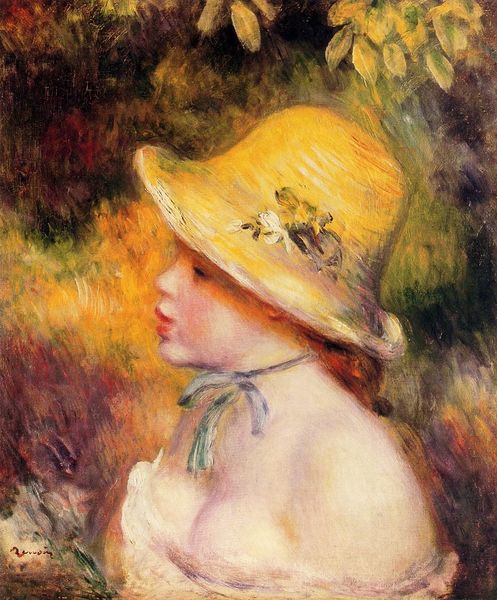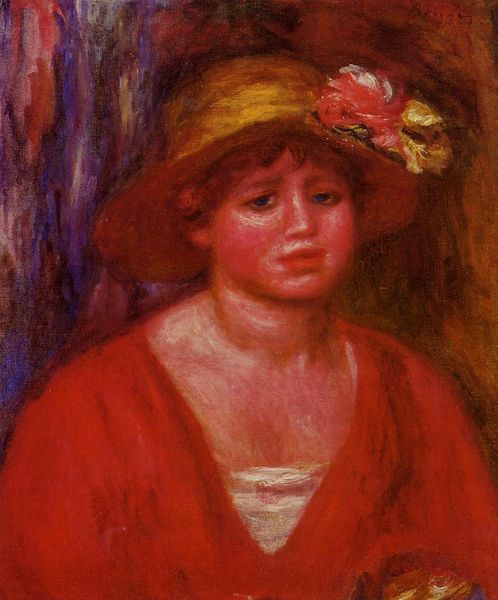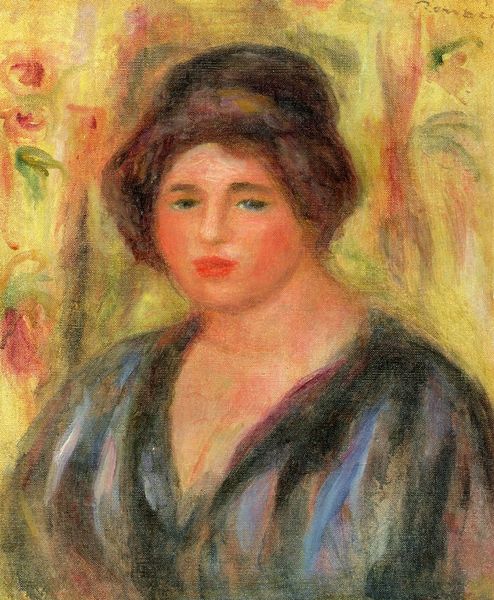
Copyright: Public Domain: Artvee
Editor: Here we have Renoir's "Woman in Muslin Dress," painted in 1917. The soft, almost hazy brushstrokes give the whole piece a dreamy, romantic feel. The colours are warm, mostly pinks and yellows, which creates a very harmonious, unified visual experience. What is your view? Curator: It is compelling to analyze how Renoir structures form through color. Note the subtle gradations of hue within the supposedly monochromatic pinks. They don't merely represent the color of a dress but articulate the very form of the woman and her environment. Editor: So you’re seeing the color as being the structure rather than just a descriptive aspect of the figure and space depicted? Curator: Precisely. The almost indiscernible shift in tonality constructs volume, suggesting planes of depth and light without reliance on distinct lines. Furthermore, consider the way he interweaves figure and ground with similar brushwork; notice how the woman blends with the decorative background, and the flat and unmodulated background and figure create ambiguities of pictorial space. Is it a flat painting or something representing 3-dimensional form? This disrupts any conventional understanding of representation and emphasizes the painting's artifice. Editor: It almost removes the subject. Curator: Exactly. The ostensible subject – the "woman" – is arguably secondary to the visual sensations generated through the application of pigment. This elevates painting as an autonomous aesthetic experience. The colour does more than describe a subject, it communicates feeling in and of itself. Editor: I see it. I initially thought the roses made a strong composition, but that's almost representational. I’m seeing how it’s actually about Renoir's expressive use of the medium now. Curator: It's rewarding to shift our focus to that structural role of painting rather than simply considering the representation.
Comments
No comments
Be the first to comment and join the conversation on the ultimate creative platform.
